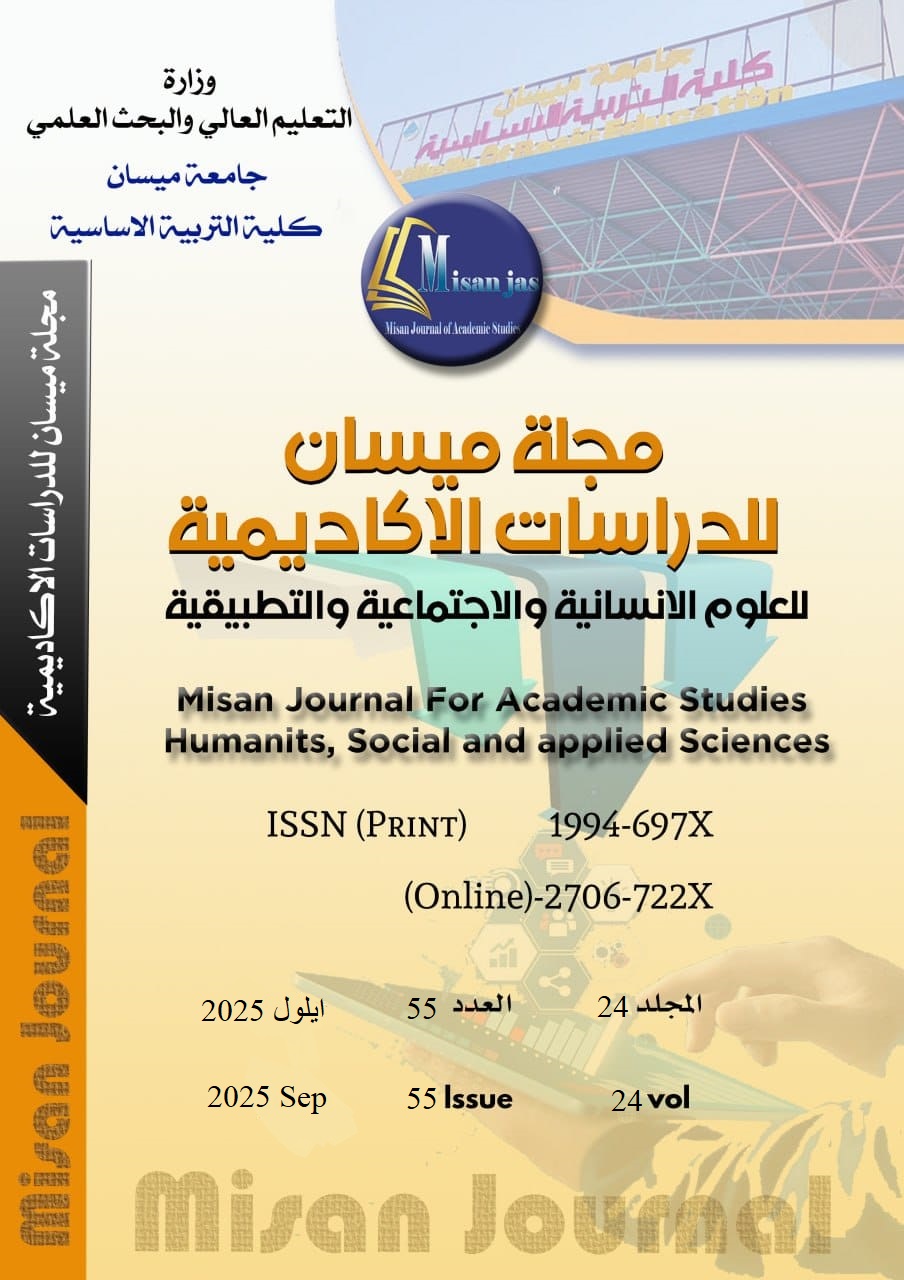Prevalence and detection of Yersinia enterocolitica isolated from different clinical cases
الملخص
Yersinia enterocolitica (Y. enterocolitica) is Gram-negative pathogen causing Yersiniosis, which is characterized by diarrhea, ileitis, and mesenteric lymphadenitis types of infection. This bacterium starts its pathogenic pathway by colonizing within host's intestinal tract after ingestion of contaminated food. It constitutes a challenge for researchers and food handlers because its growth habits, low concentrations in samples, morphological similarity with other bacteria and absence the rapid, cost-effective, and precise detecting methods.
A total of 200 human's stool samples with diarrhea at different ages were collected from several hospitals in different regions at Babylon governorate. All tested strains were identified using the ordinary biochemical tests; in addition the present investigation carried out molecular detection for the virulence related virF gene, and tests the antibiotic resistance for the obtained clinical isolates of Y. enterocolitica.
The infection rate of female was 41% and 59% for males. The highest incidence rate (36.4%) is recorded in infants (<1 year). The age group (1-6 year) is second most affected group, represents 24.70%. In contrast, the incidence rate declines significantly in older children and adolescents (7-18 years), collectively represents 8.22%. Interestingly, young adults (19-24 year) reveal a moderate prevalence rate of 5.30%, which stands up slightly in individuals at age of 25-30 years to 7.60%. Regarding to middle-aged adults (31-42 years), the prevalence rate remaining relatively low, with both 31-36 and 37-42 year age categories account for 3% for each. However, an observable expand in cases appears in patients aged 49-54 years (5.90%) and ≥55 years (5.20%). The present study showed that the prevalence rate of Y. enterocolitica accounted 4%; It had a significantly (p<0.05) lower incidence as compared with other causes of diarrhea. In the context of molecular detection of virF gene, it is found that this gene was identified in 6 isolates with percent of 75%. Regarding to antibiotic resistance, Y. enterocolitica isolates showed a highly level of resistance (100%) to ampicillin, chloramphenicol, amoxicillin-clavulanic acid, trimethoprim-sulfamethoxazole, and tetracycline, which revealing potential challenges for therapeutic options. In contrast, moderate resistance (25%) was recorded for ceftriaxone, ciprofloxacin, gentamicin, and colistin.
Y. enterocolitica-though detected at a low rate reveal to harbor significant virulence potential and alarming antibiotic resistance. The high prevalence rate of virF gene and resistance to commonly secondhand antimicrobials emphasized its emergence clinical relevance
التنزيلات
الحقوق الفكرية (c) 2025 مجلة ميسان للدراسات الأكاديمية (العلوم الانسانية والاجتماعية والتطبيقية)

هذا العمل مرخص حسب الرخصة Creative Commons Attribution-NonCommercial-NoDerivatives 4.0 International License.
تخضع جميع المقالات المنشورة في مجلتنا لشروط الترخيص
إسناد المشاع الإبداعي(CC BY-NC-ND 4.0)يسمح هذا الترخيص بإعادة إنتاج المحتوى وإعادة توزيعه وإعادة استخدامه كليًا أو جزئيًا لأي غرض مجانًا ، دون أي إذن من المؤلف (المؤلفين) أو الباحث او الطالب.
الأعمال المقدمة إلى مجلة ميسان للدراسات الاكاديمية للنشر في المجلة تخضع لشروط ترخيص(CC BY-NC-ND 4.0). حيث يمكن مشاركة المحتوى المتاح وتوزيعه وتكراره بشرط عدم وجود ربح تجاري ويجب منح الرصيد المناسب للمصدر الأصلي من خلال المصادر او الاستشهادات. من الضروري ومراجعة أي مواد تستخدم من مصادر أخرى بما في ذلك الأشكال والجداول والصور لإعادة استخدامها بموجب شروط ترخيص المشاع الإبداعي (CC BY-NC-ND 4.0). وبشرط عدم وجود تعديل على المحتوى الأصلي



